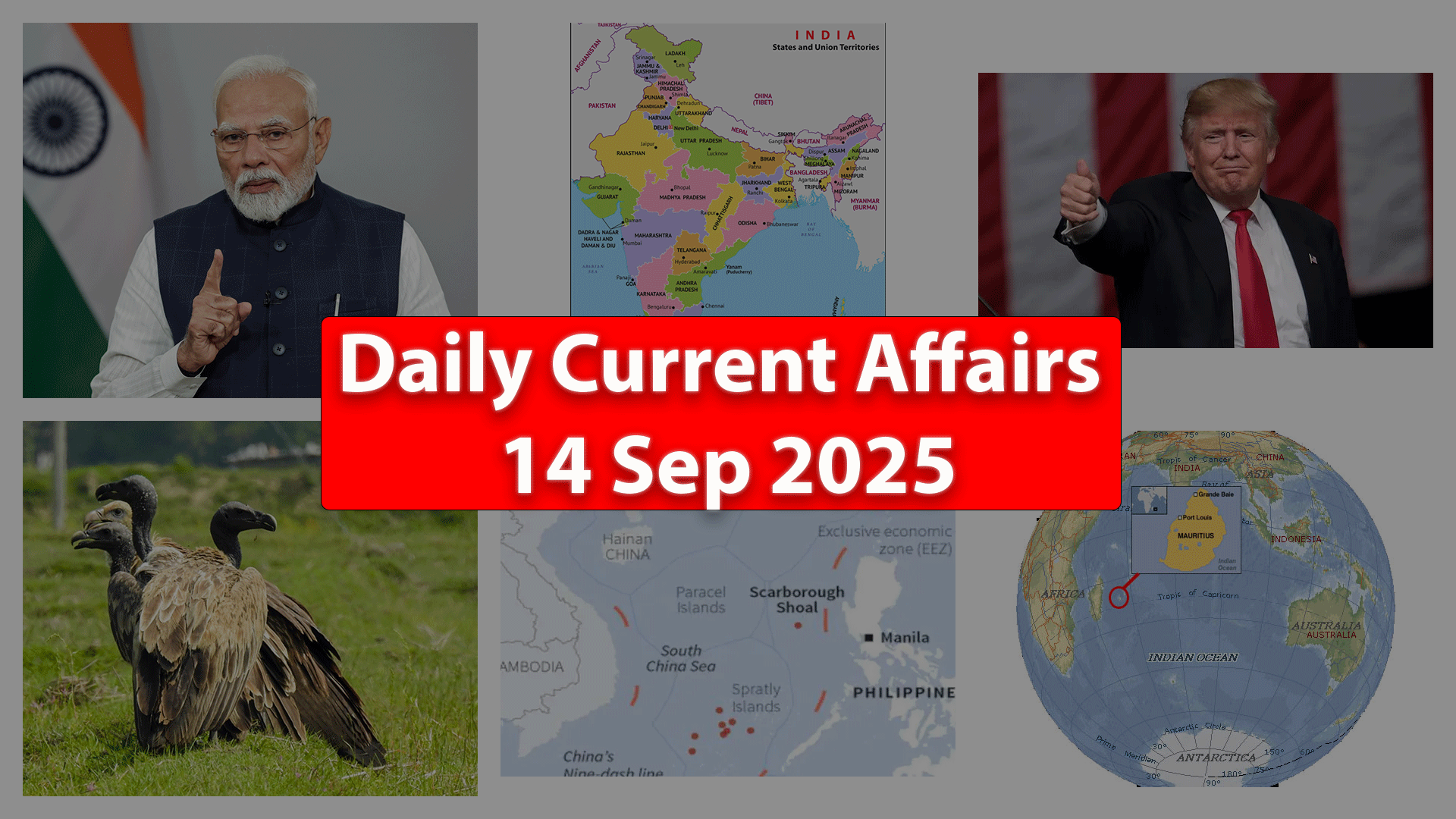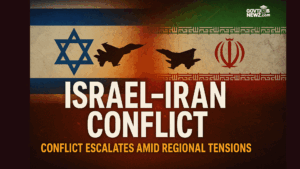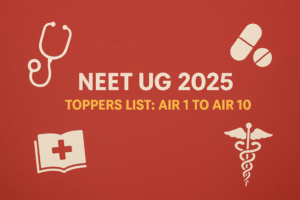Current Affairs – 14th September 2025 | Critical Updates You Must Know
Vultures and Public Health
Today brings attention to a pressing yet often ignored issue—vultures and their vital role in public health.
Their efficiency helped prevent the spread of dangerous pathogens like rabies, anthrax, and botulism—diseases that thrive when dead animals are left to rot.
Since the 1990s, India’s vulture population has collapsed by over 95%. The primary cause? The veterinary drug diclofenac, which is toxic to vultures, and still used illegally in some regions.
In their absence, carcasses remain exposed for longer periods. This attracts feral dogs and other scavengers that are far less effective and far more hazardous.
In the context, this issue intersects with broader concerns around pandemic preparedness, environmental degradation, and the One Health approach.
Public health experts are now urging policymakers to recognize vultures as essential allies in disease prevention. Their protection should be integrated into national health strategies—not just conservation plans.
As India approaches the final phase of its National Action Plan for Vulture Conservation (2016–2025), the urgency to restore these birds has never been greater.
In a world increasingly shaped by climate change and biological threats, the story of vultures and public health deserves a prominent place in today’s narrative.
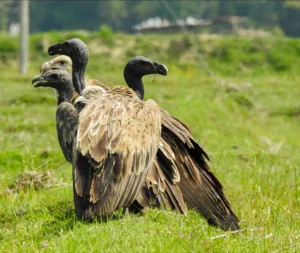
Vultures and Their Role in Pandemic Prevention –
- As India’s National Action Plan for Vulture Conservation (2016–25) ends, the next phase highlights vultures as vital for pandemic preparedness.
- By swiftly consuming carcasses, they reduce risks of zoonotic spillover and act as the first line of defence in disease surveillance and carcass management.
- However, their role in public health has rarely been
- Communities living alongside vultures remain underutilised
- Conservation financing has not yet recognised vultures as cost-effective pandemic prevention tools, despite the relatively low investments required compared to the enormous costs of outbreak responses.
India’s Vanishing Vultures and Public Health Risks –
- For centuries, vultures acted as nature’s cleanup crew, preventing the spread of deadly pathogens such as anthrax, botulinum, and rabies.
- In the 1980s, carcass dumps swarmed with hundreds of
- India once had over 40 million vultures, but since the 1990s, numbers have plummeted by more than 95%, mainly due to the veterinary drug diclofenac.
- This decline is not just ecological — it poses a growing public health challenge by tying biodiversity loss to future pandemic risks.
Central Asian Flyway and Regional Linkages –
- India’s vultures are part of the Central Asian Flyway (CAF), a vast migratory corridor connecting breeding grounds in Central Asia with wintering areas across South Asia.
- Spanning more than 30 countries, the CAF is used by millions of migratory birds, including raptors like vultures.
- As these birds move, they link ecosystems and disease risks across
- Poorly managed landfills, carcass dumps, or stopover sites can quickly become hotspots for pathogen spillover.
- Thus, the CAF represents not just a biodiversity corridor but also a public health corridor, making regional cooperation crucial.
Conservation Challenges –
- Despite this importance, conservation efforts remain fragmented and
- Vulture protection is rarely integrated into One Health strategies, which link human, animal, and environmental health.
- Infrastructure threats like electrocution from power lines and continued poisoning from toxic veterinary drugs remain largely unaddressed.
- Without stronger investment and policy alignment, regional ambitions to safeguard vultures — and in turn, human health — face major roadblocks.
India-Mauritius Ties
India announced a special economic package worth $680 million for Mauritius, combining infrastructure, healthcare, defence preparedness, and maritime security.
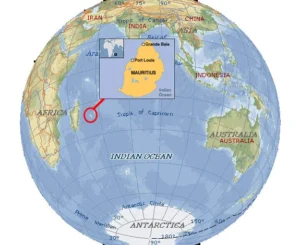
The announcement came after a bilateral meeting between the Prime Minister (PM) of India and Mauritius PM Navinchandra Ramgoolam, in Varanasi, further strengthening India-Mauritius ties.
Key Developments in the India-Mauritius Ties –
Significance of These Developments in the India-Mauritius Ties –
• Soft power diplomacy —
- Academic collaborations: IIT Madras and the Indian Institute of Plantation Management signed agreements with the University of Mauritius.
- MissionKarmayogi training modules: To be launched in Mauritius for civil service capacity
- Healthcare: 500-bed Sir Seewoosagur Ramgoolam National Hospital, AYUSH Centre of Excellence, Veterinary School, and Animal Hospital. First Jan Aushadhi Kendra outside India was inaugurated in Mauritius.
- Financial connectivity: Building on last year’s launch of UPI and RuPay services in both nations to work towards trade in local currencies.
• Strategic and maritime security dimension —
- Hydrography agreement: Joint surveys, navigation charts, and hydrographic data collection for Mauritius’ Exclusive Economic Zone (EEZ) over the next five years.
- Maritime domain awareness in the Indian Ocean: India to assist Mauritius in maritime surveillance, resource exploitation, and capacity building.
- Chagos archipelago significance: Agreements for development and surveillance of the Chagos Marine Protected Area and expanded EEZ after the sovereignty treaty with the UK.
• Geopolitical significance —
- India backed Mauritius’ sovereignty over Chagos, aligning with its anti-colonial
- The UK retains Diego Garcia for US-UK military operations, but India’s role ensures strategic leverage in the Indian
• Symbolic and cultural aspects —
- From partnership to family: The Indian PM emphasised that India and Mauritius are “not just partners but a family”.
- Historical linkages: Indian culture and traditions became part of Mauritian daily life centuries ago.
- Symbolic spiritual connect: The Mauritius PM witnessed the Ganga Aarti, and he is scheduled to offer prayers at Shri Kashi Vishwanath Dham before leaving for Ayodhya.
Broader Strategic Context –
- Mauritius views India as a preferred partner for safeguarding maritime interests, reaffirming its position as a —
- Net security provider in Indian
• Champion of South-South cooperation.
- Supports the vision of a free, open, secure, stable, and prosperous Indo-Pacific.
- Reinforces India’s influence amidst rising China’s presence in the
India-Mauritius Ties and Emerging Contours in the Region –
- India as a first responder — As Mauritius is one of the closest African nations to India, India has consistently supported Mauritius during crises, including the Covid-19 pandemic, the Wakashio oil spill in 2020,
• Economic ties —
- Mauritius is a major economic partner, ranking as the second-largest source of Foreign Direct Investment (FDI) in India after
- The two countries signed the Comprehensive Economic Cooperation and Partnership Agreement in 2021, India’s first trade deal with an African country
- Development assistance — India has provided nearly $1.1 billion in development assistance to Mauritius over the last decade, including $729 million in lines of credit and $427 million in grants.
- Diaspora — Around 70% of the island’s 3 million residents are of Indian descent.
• Emerging geopolitical contours in the western Indian Ocean —
- China, Russia, Iran, Turkey, and the Gulf nations are increasing their presence in the
- Europe is seeking to reassert its influence in Indian
- Mauritius has balanced its global partnerships while maintaining strategic
Conclusion –
- India’s package for Mauritius marks a blend of hard (maritime security cooperation) and soft power (development diplomacy)
- Strengthening Mauritius’ EEZ surveillance will not only secure its resources but also expand India’s strategic reach in the Indian Ocean.
- With the Chagos Agreement strengthening Mauritius’ sovereignty, India stands to gain a trusted ally in a geopolitically sensitive region.
- The partnership reinforces India’s Neighbourhood First and Vision Mahasagar, while advancing its role as a key maritime power in the Indo-Pacific.
Isobutanol blending with Diesel
The government is exploring isobutanol blending with diesel after ethanol blending trials failed, with ARAI conducting tests to ensure compatibility and support farmer incomes.
About Isobutanol –
- Isobutanol, also called isobutyl alcohol, is an alcohol with the chemical formula C₄H₁₀O and
One of the four isomers of butanol.
- It is a clear, colourless liquid with a characteristic
- It is only moderately soluble in water.
- It is very flammable and has a flash point that is only slightly above normal room temperature.e
• Its vapours are heavier than air and can spread unnoticed along the ground.
- Skin contact, ingestion, and inhalation of isobutanol can be harmful to
- The compound causes skin irritation and severe eye damage, including loss of
• Applications —
- It is used as a solvent in the flavour, fragrance, pharmaceutical, and pesticide industries and as a chemical manufacturing ingredient for products such as lacquer, paint strippers, paint primer, and craft
- It is an approved food additive and is also naturally occurring in some foods and many
alcoholic beverages.
- Isobutanol may also be used as a biofuel because, like ethanol, it can be manufactured from It can be made from ethanol using fermentation processes.
- It possesses some favourable properties that make it an attractive fuel for internal combustion engines.
- For instance, when compared to ethanol, isobutanol features a higher heating value.
• Isobutanol is less corrosive than ethanol and is much less hygroscopic, which enables it to be transported using the existing fuel infrastructure.
- Moreover, its addition to gasoline does not distort the fuel blend’s vapour pressure to the same extent as ethan. All of this while having a high octane rating.
Fast Track Immigration-Trusted Traveller Programme
Recently, the Union Home Minister launched the Fast Track Immigration-Trusted Traveller Programme (FTI-TTP) at 5 more airports.
About Fast Track Immigration-Trusted Traveller Programme –
- It is an initiative to speed up the Immigration clearance process for eligible persons from the following categories: Indian Nationals and Foreign Nationals holding.OCI
- It was first launched at Delhi’s IGI Airport in
- Purpose — It has been introduced to facilitate international mobility with faster, smoother, and secure immigration clearances.
• FTI-TTP Enrollment Process —
- The FTI-TTP has been implemented through an online portal.
- To enroll in this program, applicants must register online on the portal by filling in their details and uploading the required documents.
The biometrics of registered applicants are collected at the Foreigners Regional Registration Office (FRRO) or while passing through the airport.
• Immigration Clearance Process —
- Boarding Pass Scan: Registered travellers scan their boarding pass at the e-gates to retrieve flight details.
- PassportScan: The passport is scanned to confirm the traveller’s
- BiometricAuthentication: Biometrics is authenticated at the e-gates.
- Automated Clearance: Once verified, the e-gate opens, completing the immigration process automatically.
- Validity of Registration: It is valid until the passport’s expiry or five years, whichever comes first, with an option for renewal.
- Till now, this facility has been started at 13 airports across the
- Nodal agency: The Bureau of Immigration, under the Ministry of Home Affairs, is the nodal agency responsible for implementing the programme.
Scarborough Shoal
The Philippines has reacted strongly to China’s announcement of establishing a nature reserve in the South China Sea at the disputed Scarborough Shoal.
About Scarborough Shoal –
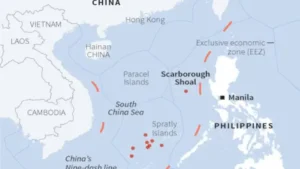
- It is a disputed atoll in the South China Sea, claimed by both China and the Philippines as part of their
- It is located some 220 kilometers west of the Philippines’ Island of
- It is the largest atoll in the South China Sea, submerged at high tide with few rocks above sea
• What is the Dispute?
- China’s claim: China, which now refers to the shoal as Huangyan Island, makes a historical claim to the area, stating that they can trace their ownership of the area back to the Yuan Dynasty of the
- Philippines claim: The Philippines claims the area based on geography, as it is much closer to the Philippines’ main island of Luzon, which contains the capital, Manila, but lies over 500 miles from China.
- It is considered within the Philippines’ 200-nautical-mile exclusive economic zone, based on the 1982 United Nations Convention on the Law of the Sea (UNCLOS).
- Commercial Significance — The deep waters around the shoal make it a productive fishing area, rich in marine life, and the lagoon also contains many commercially valuable shellfish and sea cucumbers.
Perpetual Bonds
Indian Renewable Energy Development Agency Ltd (IREDA) recently said it has raised ₹453 crore at 7.70% per annum through its second issue of Perpetual Bonds, a step that strengthens its capital base for financing green energy projects.
Biodiversity Heritage Sites (BHS)
The government recently declared 8.6 acres of green cover at Cantonment Railway Colony as a biodiversity heritage site — the second in Bengaluru after Gandhi Krishi Vigyan Kendra (GKVK).
About Biodiversity Heritage Sites (BHS) –
- BHS are rich biodiversity areas and are important components of local ecosystems, which are being conserved and managed by the
- BHS are unique ecosystems having rich biodiversity comprising any one or more of the following components —
- Richness of wild as well as domesticated species or intra-specific
• High endemism.
• Presence of rare and threatened species, keystone species, and species of evolutionary significance.
- Wild ancestors of domestic/cultivated species or their
- Past pre-eminence of biological components represented by fossil beds and having significant cultural, ethical, or aesthetic values, and are important for the maintenance of cultural diversity, with or without a long history of human association with
- They may spread over terrestrial, aquatic, coastal, and inland, and marine ecosystems
having rich biodiversity.
- Under Section 37 of the Biological Diversity Act, 2002, the State Government, in
Consultation with local bodies may notify areas of biodiversity importance as BHS.
- State Governments are empowered to frame schemes for compensating or rehabilitating any person or section of people economically affected by such
The State Government, in consultation with the Central Government, may frame rules for the management and conservation of BHS.
• The creation of BHS may not put any restriction on the prevailing practices and usages of the local communities other than those voluntarily decided by them.
- The purpose of declaring BHS is to enhance the quality of life of the local communities through the conservation of such sites.
• In 2007, the Nallur Tamarind Grove in Bengaluru, Karnataka, was designated as India’s first BHS.
AdFalciVax Vaccine
Recently, the Indian Council of Medical Research (ICMR) granted non-exclusive rights for its multi-stage malaria vaccine, AdFalciVax, to five pharmaceutical companies.
About AdFalciVax Vaccine –
- It is India’s first indigenous multi-stage malaria recombinant vaccine developed by the Regional Medical Research Centre (RMRC), Bhubaneswar, under the ICMR.
• Key feature of the vaccine —
- The vaccine is designed to prevent Plasmodium falciparum infection in individuals and reduce community transmission.
- Plasmodium falciparum is the deadliest malaria parasite, difficult to control, and responsible for widespread devastation
- AdFalciVax targets the parasite before it enters the bloodstream, stopping the infection at the transmission stage.
- The vaccine uses Lactococcus lactis, a genetically engineered food-grade bacterial host, as its core technology
- It delivers a dual-antigen approach combining PfCSP (Plasmodium falciparum circumsporozoite protein) to prevent infection, and Pfs230 and Pfs48/45 fusion proteins to block transmission from humans to mosquitoes.
- This dual-antigen approach makes AdFalciVax a multi-functional vaccine, aimed at both protecting individuals and halting the spread of malaria.
- Pre-clinical validation was carried out in collaboration with ICMR–National Institute of Malaria Research (ICMR-NIMR) and National Institute of Immunology (NII), Delhi, under the Department of Biotechnology.
The Great Nicobar Project
The Great Nicobar Island Project, spearheaded by the Narendra Modi government, is an ambitious undertaking that seeks to transform the island into a strategic hub of maritime and air connectivity in the Indian Ocean Region.
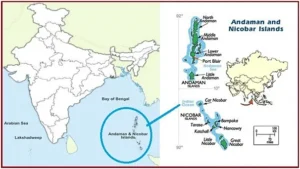
The plan envisions an International Container Transhipment Terminal (ICTT) with a capacity of
14.2 million TEUs, a greenfield international airport, a 450 MVA gas and solar-based power plant, and a 16,610-hectare township.
While the project is promoted as a model of balanced development, promising infrastructure growth, employment opportunities, and enhanced defence capabilities, it also raises questions concerning ecological sustainability, tribal rights, and long-term social implications.
Strategic and Economic Significance –
- The location of Great Nicobar at the mouth of the Malacca Strait makes it vital for India’s strategic interests.
- A modern transhipment hub will allow India to compete with existing global shipping centres and reduce dependence on foreign ports.
- Likewise, the airport and power facilities will strengthen connectivity and support both civilian and military operations in a region of increasing geopolitical importance.
- The project, therefore, is positioned not merely as an economic catalyst but as a cornerstone of India’s national security and maritime interests.e
Environmental Scrutiny and Mitigation –
- Given the island’s rich biodiversity and fragile ecosystem, environmental safeguards have been emphasised in project documentation.
- Detailed Environmental Impact Assessment (EIA) and Environmental Management Plans (EMP) were prepared, supported by inputs from reputed research organisations such as the Zoological Survey of India, the Botanical Survey of India, SACON, and the Wildlife Institute of India.
- Mitigation strategies include —
- Allocation of over ₹81 crore to conservation initiatives, even before
- An emergency management framework addressing both natural and anthropogenic
- Retention of green zones and creation of wildlife corridors to safeguard arboreal and marine species.
- Compensatory afforestation in Haryana, in line with the Forest (Conservation) Act, 1980, since over 75% of the Union Territory is already under forest cover.
- Nonetheless, the environmental trade-offs remain
- Over 65 lakh trees could be affected across 130.75 sq. km of forest land, raising concerns about long-term ecological damage despite mitigation plans.
Tribal Rights and Welfare Provisions –
- The project’s most contentious dimension concerns its implications for the Nicobarese and Shompen tribes, both classified as Particularly Vulnerable Tribal Groups (PVTGs).
- Official assurances claim that the project will not displace tribal populations, as the only inhabited areas, such as New Chingen and Rajiv Nagar, will remain untouched.
- Measures to safeguard tribal rights include —
- Consultations with the Anthropological Survey of India, the Ministry of Tribal Affairs, and the Andaman Adim Janjati Vikas Samiti (AAJVS).
- Compliance with the Shompen Policy (2015) and the Jarawa Policy (2004), which mandate prioritisation of tribal welfare in development
- De-notification of 07 sq. km of Tribal Reserve land for the project, offset by re-notification of 76.98 sq. km, resulting in a marginal net increase of protected tribal land.
- Formation of committees to monitor tribal welfare during the project
While these provisions suggest sensitivity to tribal concerns, the displacement of traditional land, even with compensatory reallocation, invites scrutiny.
- Land is not only an economic resource but also a cultural and spiritual anchor for indigenous communities.
- Critics may argue that bureaucratic assurances cannot fully capture the long-term social and cultural disruption such projects can trigger.
Challenges and the Way Forward –
- The government frames the Great Nicobar Project as a synthesis of economy and ecology, promoting growth while safeguarding the environment and culture.
- Its phased execution, stretching to 2047, demonstrates long-term vision. By limiting the footprint to just 2% of the Andaman and Nicobar Islands’ total area, proponents argue that the project balances ecological and strategic needs.
• However, balancing growth with sustainability is complex.
- Development-driven deforestation, compensatory afforestation outside the islands, and potential disruptions to tribal ways of life raise fundamental questions about whether modernisation can truly coexist with ecological conservation and indigen.ous
Conclusion –
- The Great Nicobar Island Project embodies India’s attempt to align its strategic imperatives with developmental goals while maintaining a veneer of environmental and tr.i bal
- On paper, the project incorporates safeguards, consultations, and compensatory
- Yet, the real test will lie in its execution, whether commitments to ecology and tribal welfare are honoured not just formally but
- Ultimately, the project reflects the broader dilemma faced by developing nations: the pursuit of rapid economic and strategic advancement while upholding principles of sustainability and culture. ltural
Daily Current Affairs MCQs
1. ‘Diclofenac’ is an anti-inflammatory drug used to treat –
- Vultures
- Cattle
- Horse
- None of the above
Answer – B
Explanation – Diclofenac is a non-steroidal anti-inflammatory drug (NSAID) administered to reduce inflammation and to reduce pain in certain conditions. NSAIDs are associated with adverse kidney (renal) failure, which is caused due to the reduction in synthesis of renal prostaglandins. Vultures, which were unable to break down the chemical diclofenac, suffer from kidney failure when they eat the carcass of animals that have been administered the drug Diclofenac. The National Board for Wildlife (NBWL) has cleared a plan for conserving vultures. Saliently, the drugs that are used to treat cattle and known to poison vultures will be banned by the Drugs Controller General of India. Diclofenac, a drug used to treat cattle, was linked to kidney failure in vultures and a decline in the bird’s population. Though the drug was banned in 2006, it is reportedly still available for use.
2. Consider the following statements regarding Isobutanol –
- It is highly soluble in water and forms a homogeneous
- It is less corrosive and less hygroscopic than ethanol, making it compatible with existing fuel
- Its addition to gasoline increases the vapour pressure of the fuel blend to a greater extent than
- It has a higher heating value and a higher octane rating compared to
Which of the statements given above are correct?
- 1 and 3 only
- 2 and 4 only
- 2, 3, and 4 only
- 1, 2, and 4 only
Answer – B
Explanation – isobutanol, also called isobutyl alcohol, is an alcohol with the chemical formula C₄H₁₀O and one of the four isomers of butanol. It is a clear, colourless liquid with a characteristic odour. It is only moderately soluble in water. It is very flammable and has a flash point that is only slightly above normal room temperatures. Its vapours are heavier than air and can spread unnoticed along the ground. Skin contact, ingestion, and inhalation of isobutanol can be harmful to health. The compound causes skin irritation and severe eye damage, including loss of vision. Applications — It is used as a solvent in the flavour, fragrance, pharmaceutical, and pesticide industries and as a chemical manufacturing ingredient for products such as lacquer, paint strippers, paint primer, and craft paints. It is an approved food additive and is also naturally occurring in some foods and many alcoholic beverages. Isobutanol may also be used as a biofuel because, like ethanol, it can be manufactured from plants. It can be made from ethanol using fermentation processes. It possesses some favourable properties that make it an attractive fuel for internal combustion engines. For instance, when compared to ethanol, isobutanol features a higher heating value. Isobutanol is less corrosive than ethanol and is much less hygroscopic, which enables it to be transported using the existing fuel infrastructure. Moreover, its addition to gasoline does not distort the fuel blend’s vapour pressure to the same extent as ethanol does. All of this while having a high octane rating.
3. With reference to the Scarborough Shoal, consider the following statements —
- It is a disputed territory in the South China Sea claimed by China, Taiwan, and the
- It is located west of the Philippine island of
- In 2016, the Permanent Court of Arbitration ruled that China has no legal basis to claim historic rights over the Scarborough Shoal.
Which of the statements given above is/are correct?
- 1 and 2 only
- 2 and 3 only
- 1 and 3 only
- All of the above
Answer – D
Explanation – The Scarborough Shoal is a disputed territory in the South China Sea claimed by China, Taiwan, and the Philippines. It is a ring of reefs and rocks located around 200 km west of the Philippine island of Luzon. In 2016, the Permanent Court of Arbitration ruled that China has no legal basis to claim historic rights over the Scarborough Shoal and other areas within the Philippines’ exclusive economic zone and continental shelf.
4. Consider the following statements regarding Decentralised Finance (DeFi) –
- It operates on a system that requires mandatory identity verification and the opening of a formal account.
- It utilises smart contracts and decentralised applications to facilitate peer-to-peer
A primary objective is to eliminate financial intermediaries to reduce costs and increase transaction speed.
Which of the statements given above is/are correct?
- 1 and 2 only
- 2 and 3 only
- 1 and 3 only
- All of the above
Answer – B
Explanation – DeFi is an emerging financial system using blockchain and cryptocurrencies to enable direct transactions between individuals and businesses. DeFi platforms use a combination of existing blockchains, stablecoins, software, and hardware. It offers financial products and services enabling saving, investing, lending, remittance, insurance contracts, etc., without the intermediation of traditional financial institutions or banking. The transactions take place through smart contracts, open protocols, and decentralised applications (D-Apps), allowing direct peer-to-peer transactions without intermediation. A digital wallet, when integrated with DeFi, serves as a gateway, bypassing the banking network. Access to the DeFi service does not warrant the opening of an account or identity verification. A customer can register with a password and create several crypto wallets. Most wallets do not ask for an address, phone number, or email verification, and one can use different DeFi exchanges or DeFi lending and borrowing platforms. This system eliminates intermediaries like banks and other financial service companies. These companies charge businesses and customers for using their services, which are necessary in the current system. By eliminating intermediaries, DeFi aims to reduce costs and speed up processes. Unlike centralised financial institutions such as banks, exchanges, or brokerage firms, DeFi systems provide uncensored access for everyone. In a DeFi system, individual traders can easily store and transfer funds in a digital wallet, which is directly accessible at any time, with no intermediary. Overall, DeFi offers users more control over their money. Financial assets can be transferred or purchased in a matter of seconds or minutes.
5. Which of the following is/are true about Biodiversity Heritage Sites (BHS)?
- Areas with High endemism and the presence of keystone species can be declared as Biodiversity Heritage Sites.
- Biodiversity Heritage Sites (BHS) are declared as per the provisions of the Biological Diversity Act,
Select the correct codes from below –
- 1 only
- 2 only
- Both 1 and 2
- Neither 1 nor 2
Answer – C
Explanation – “Biodiversity Heritage Sites” (BHS) are well defined areas that are unique, ecologically fragile ecosystems – terrestrial, coastal and inland waters and, marine having rich biodiversity comprising of any one or more of the following components: richness of wild as well as domesticated species or intra-specific categories, high endemism, presence of rare and threatened species, keystone species, species of evolutionary significance, wild ancestors of domestic/cultivated species or their varieties, past pre-eminence of biological components represented by fossil beds and having significant cultural, ethical or aesthetic values and are important for the maintenance of cultural diversity, with or without a long history of human association with them.
Under Section 37 of the Biological Diversity Act, 2002 (BDA), the State Government, in consultation with local bodies, may notify in the official gazette areas of biodiversity importance as Biodiversity Heritage Sites (BHS).

